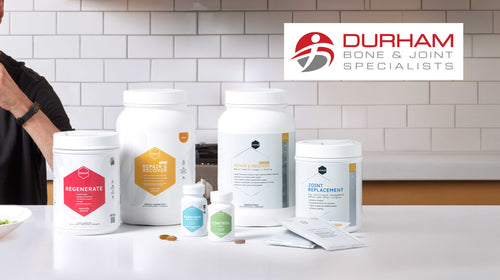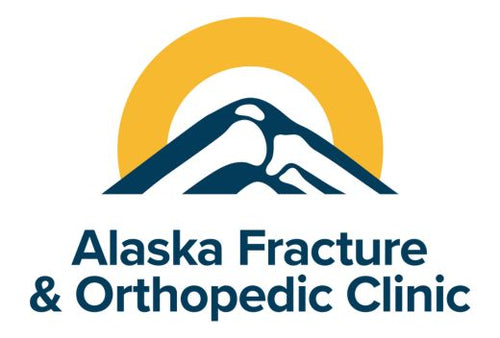In this article:
What is arthritis
Arthritis is an inflammation of the joints. Around 23% (54 million) of all adults in the United States have arthritis. More than 1 in 4 adults with arthritis experience severe joint pain and about half of the adults with arthritis report they are limited in their activities due to their arthritis. [1][2]
Arthritis isn’t a single condition; there are more than 100 types of arthritis. The most common forms of arthritis are osteoarthritis and rheumatoid arthritis. Osteoarthritis causes cartilage (the tissue that covers the ends of bones) to break down, whereas rheumatoid arthritis is a chronic inflammatory disorder where the immune system attacks the joints. [2][3]
The symptoms of arthritis vary depending on the type of arthritis one has. The most common symptoms are joint pain, stiffness, and swelling. Arthritis signs and symptoms may vary in severity and occurrence; periods of diseases activity are alternated by periods of abeyance. Joint stiffness is usually worse in the mornings and after a period of inactivity. [3][4] Most types of arthritis affect the joints. However, some types, like rheumatoid arthritis, may also damage the skin, eyes, lungs, heart and blood vessels. [3]

Causes
The causes of arthritis also vary depending on the type. With osteoarthritis, the most common type of arthritis, is caused by a reduction of the amount of cartilage tissue that protects the joints. Some wear and tear of the cartilage over the course of a life is normal, but an infection or injury to the joints can increase the natural breakdown of cartilage tissue. [2][4]
Contrary to osteoarthritis, rheumatoid arthritis is an autoimmune disorder which occurs when the body’s immune system attacks the joint tissue. These attacks affect the synovium; the soft tissue in joints that produces a fluid that nourished cartilage. This can lead to the destruction of both the bone and cartilage inside the joint. [3][4]
Other determinants include genes, age, and sex. Some types of arthritis run in families; genes can make one more susceptible to trigger arthritis. With most types of arthritis, the risk of arthritis increases with age. Another thing that increases the risk of developing arthritis are hormones. It is found that more rheumatoid arthritis is more common in women than in men, while most people who suffer from gout, another form of arthritis, are men. [2][5]
Treatment
The main objective of treatment of arthritis is reducing the amount of pain and preventing further damage to the joints. This differs per person; some have found that heating pads and ice packs help relieve the pain, whereas others use assistive devices to take pressure off sore joints. There also is a number of medications that treats arthritis. Most of them decrease inflammation and relieve arthritis pain. [4][6]
There also are lifestyle changes that can help with the treatment of arthritis. Physical therapy can help strengthening the muscles around the affected joints. Regular exercise keeps the joints flexible, but people with arthritis should be cautious not to put too much pressure on the affected joints. [4]
Maintaining a healthy diet can reduce symptoms of arthritis. As being overweight puts extra stress on joints, weight loss or maintaining a healthy weight can help with reducing pain. Choosing a diet that is heavy in antioxidants, such as fresh fruits and vegetables, and inflammation reducing foods, such as fish and nuts, can help reduce inflammation. Avoiding foods that have a high amount of added sugars, processed and red meats, gluten containing foods, fried foods, and dairy products may reduce symptom severity. [4][7][8][9][10]
Foods to include in your diet
- Fresh fruits: Berries are full of antioxidants, vitamins, and minerals, and therefore have the ability to decrease inflammation.
- Vegetables: Veggies such as broccoli and spinach are full of nutrients, and are associated with reduced inflammation. Broccoli also contains sulforaphane, which has anti-inflammatory properties. Spinach is rich in kaempferol (an antioxidant), which has been found to slow the progression of osteoarthritis.
- Fatty fish: Fatty fish is high in both omega-3 fatty acids and Vitamin D. Both may be beneficial for reducing inflammation and alleviate arthritis symptoms.
- Nuts: Walnuts are high in omega-3 fatty acids, which could relieve arthritis symptoms and inflammation.
Foods to avoid
- Added sugars: Foods containing added sugar trigger the release of pro-inflammatory cytokines (a group of proteins), which cause inflammation.
- Processed red meats: Processed foods contain trans fats to help perserve them, whereas red meats are high in saturated fats. Those trans fats and saturated fats can both increase systemic inflammation, especially in people with obesity.
- Gluten: Foods that contain gluten are considered refined grains, which can cause a spike in blood glucose, which in turn can increase inflammation in the body.
- Fried foods: Just like processed food, fried foods contain trans fats, and also contains a high level of advanced glycation end products, which both stimulate inflammation.
- Dairy products: Many foods that are made from dairy are high in both saturated fats and advanced glycation end products. Therefore, they can trigger inflammation and should be avoided. However, food such as Greek yoghurt has been found to be anti-inflammatory.
MEND Repair Recover may be able to help with arthritis treatment, as it reduces low level inflammation. Ingredients like turmeric, bioperine, and glutamine have been found to help manage inflammation. [11] Furthermore, research on protein’s impact on inflammation and arthritis keeps growing. A recent meta-analysis suggests that protein supplementation, combined with exercise training improves functional outcomes and reduces pain in adults with osteoarthritis. [12][13]
Sources:
[1] Arthritis Fast Facts
[2] Arthritis
[3] Rheumatoid Arthritis
[4] Arthritis
[5] Causes Rheumatoid Arthritis
[6] Treatment Rheumatoid Arthritis
[7] 8
Foods and Beverages to Avoid with Arthritis
[8] The
10 Best Foods to Eat If You Have Arthritis
[9] In the Kitchen with Arthritis: Foods to Avoid
[10] Kaempferol Alleviates
the Interleukin-1ß-Induced Inflammation in Rat Osteoarthritis Chondrocytes via Suppression of NF-kB
[11] Curcumin: A Review of It’s Effects on Human Health
[12] Protein and
Arthritis
[13] Clinical Paper: Meta-Analysis of Protein Supplementation in
Lower-Extremity Osteoarthritis




